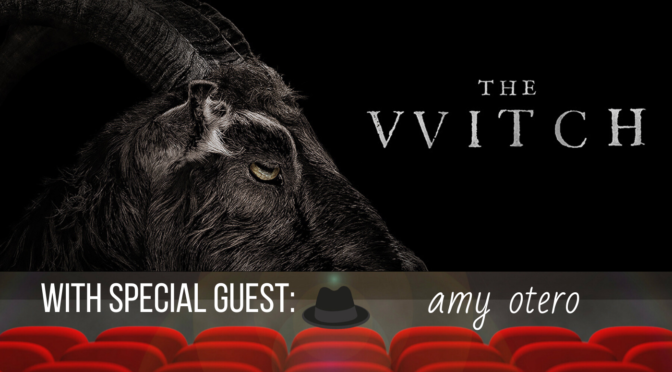Director Robert Eggers burst on the scene in 2015 with The Witch. And when he did, horror audiences didn’t know quite how to react. The film — subtitled “A New England folktale” — follows a Puritan family in 1600s New England and its inevitable descent into hell. However, its period setting, era-accurate dialect, and slowly building tension came across as jarring to audiences accustomed to jump scares and slasher films.
Amy Otero joins the show this episode to help us analyze what makes The Witch such a powerful and distinctive cinematic experience. We’ll touch on Anya Taylor-Joy’s star-making performance, the truth behind the film’s divisive ending, and the thematic similarities between Eggers’ The Witch and Ari Aster’s Midsommar. We’ll even throw in a bit of a mini-review for Eggers’ sophomore effort, 2019’s The Lighthouse.
Ready to live deliciously? Then listen in as we tackle The Witch.
SYNOPSIS
In 1630 New England, panic and despair envelop a farmer (Ralph Ineson), his wife (Kate Dickie), and their children when youngest son, Samuel, suddenly vanishes. The family blames Thomasin (Anya Taylor-Joy), the oldest daughter who was watching the boy at the time of his disappearance. With suspicion and paranoia mounting, twin siblings Mercy (Ellie Grainger) and Jonas (Lucas Dawson) suspect Thomasin of witchcraft, testing the clan’s faith, loyalty, and love to one another.
SHOW NOTES
Join the Crooked Table Crew by becoming an official patron over at Patreon.com/CrookedTable
Subscribe to the Crooked Table Podcast on iTunes so that you never miss a moment!
Listen to the Crooked Table Podcast on Spotify!
The Crooked Table Podcast is also on Stitcher! Reach Robert Yaniz Jr. on Twitter at @crookedtable.
Connect with Crooked Table on social media: Facebook | Twitter | Tumblr

